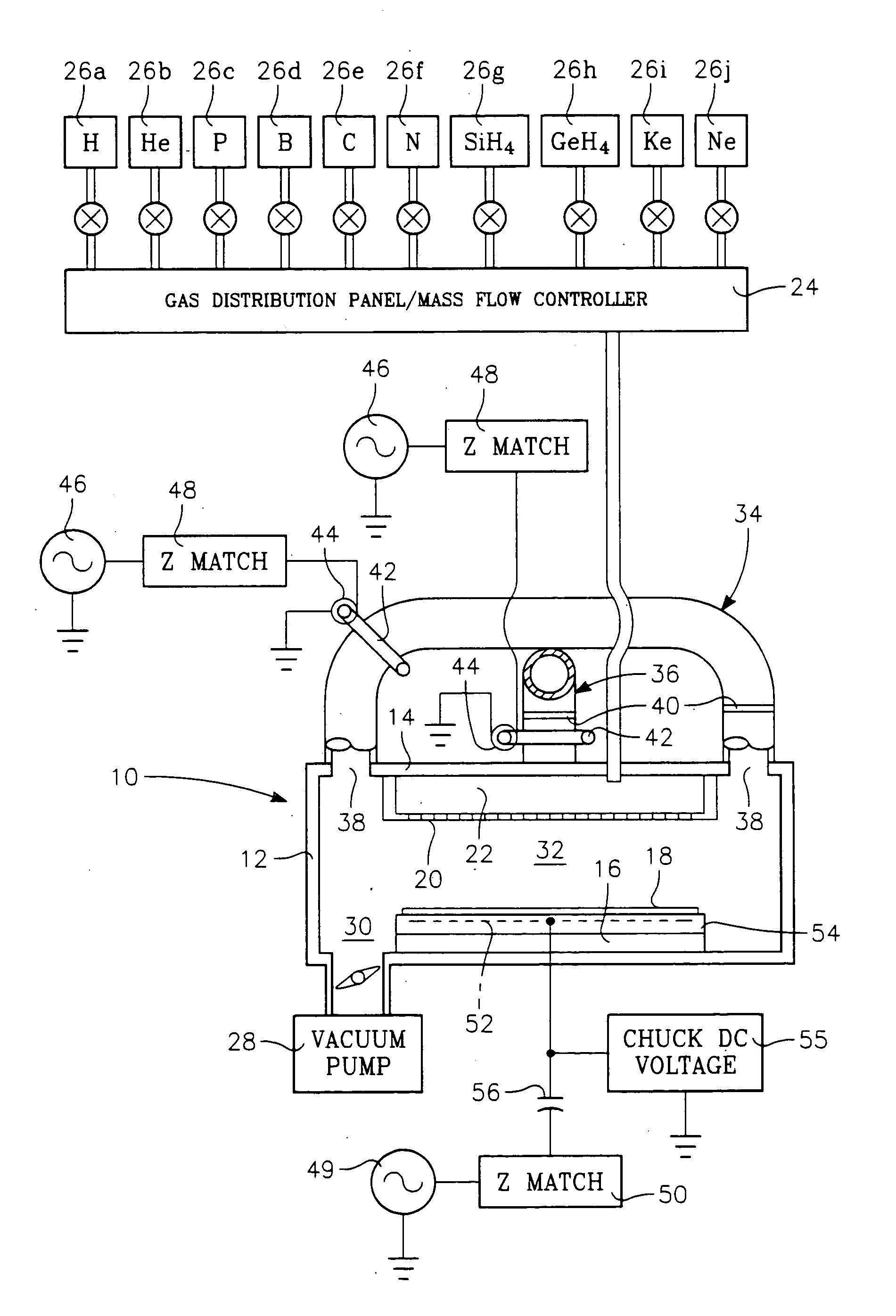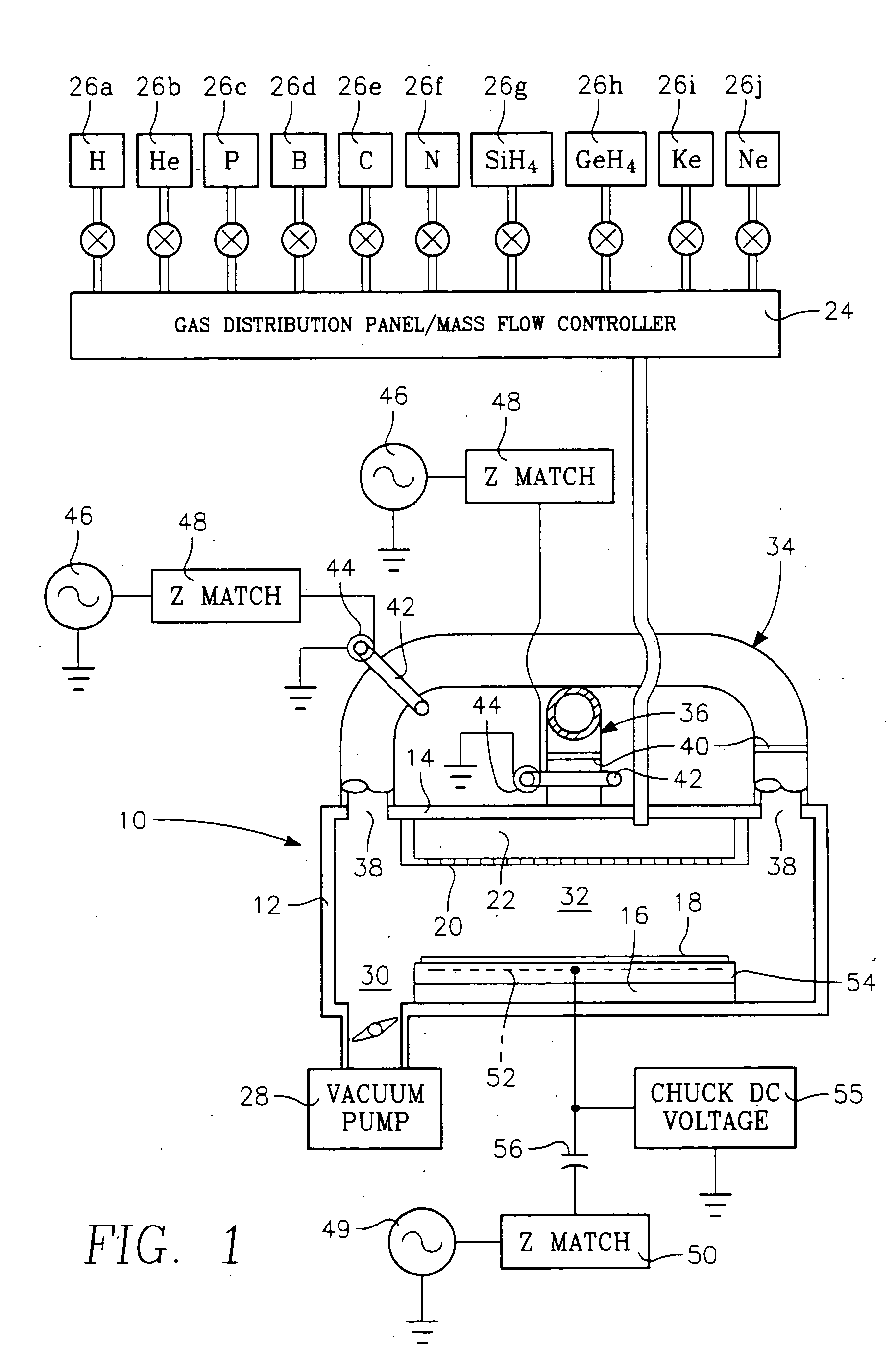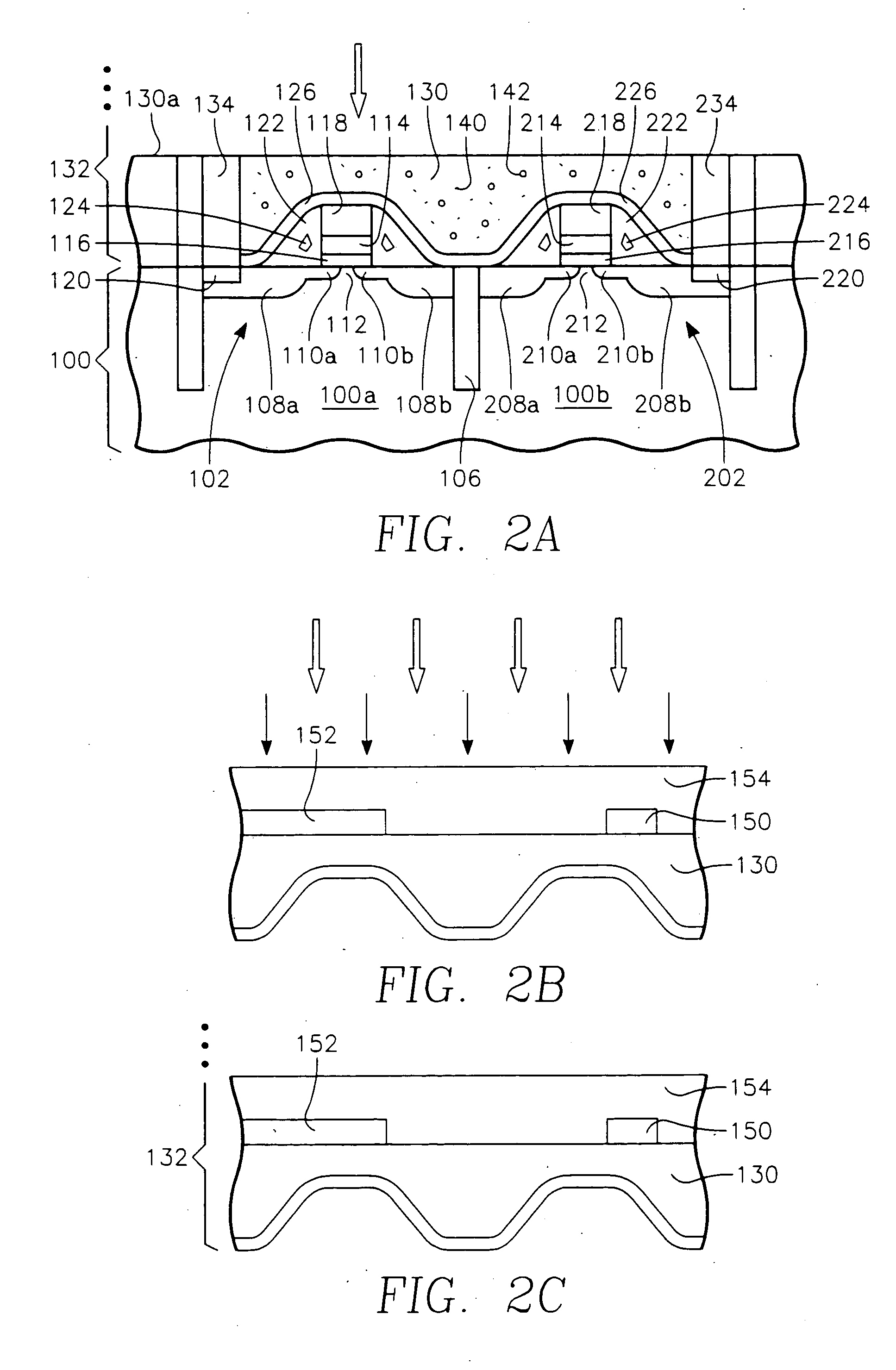Method for ion implanting insulator material to reduce dielectric constant
a technology of ion implanting insulator and dielectric constant, which is applied in the direction of electrical equipment, semiconductor devices, electric discharge tubes, etc., can solve the problems of low mechanical properties of porous materials with low dielectric constant, poor mechanical properties of silicon dioxide, and low dielectric constant of silicon dioxide, so as to reduce the dielectric constant
- Summary
- Abstract
- Description
- Claims
- Application Information
AI Technical Summary
Benefits of technology
Problems solved by technology
Method used
Image
Examples
Embodiment Construction
[0027] In the present invention, an insulating material having excellent mechanical properties but poor electrical properties (a relatively high dielectric constant) is subject to ion implantation of a light gaseous species such as hydrogen or helium. The ion energy and dosage of the implantation process and the temperature of the insulating material are selected so that implanted atoms of the gaseous species inside the insulating material migrate or coalesce toward one another to form small gas bubbles throughout the insulating material. The gas bubbles within the insulating material have a very low dielectric constant (e.g., about 1.04). The result is that the total dielectric constant of the insulating layer is significantly reduced due to the presence of the bubbles. In the case of silicon dioxide containing bubbles formed by ion implantation of a gaseous species, the dielectric constant may be as low as 3.5. The reduction in dielectric constant depends upon the proportion of th...
PUM
 Login to View More
Login to View More Abstract
Description
Claims
Application Information
 Login to View More
Login to View More - R&D
- Intellectual Property
- Life Sciences
- Materials
- Tech Scout
- Unparalleled Data Quality
- Higher Quality Content
- 60% Fewer Hallucinations
Browse by: Latest US Patents, China's latest patents, Technical Efficacy Thesaurus, Application Domain, Technology Topic, Popular Technical Reports.
© 2025 PatSnap. All rights reserved.Legal|Privacy policy|Modern Slavery Act Transparency Statement|Sitemap|About US| Contact US: help@patsnap.com



